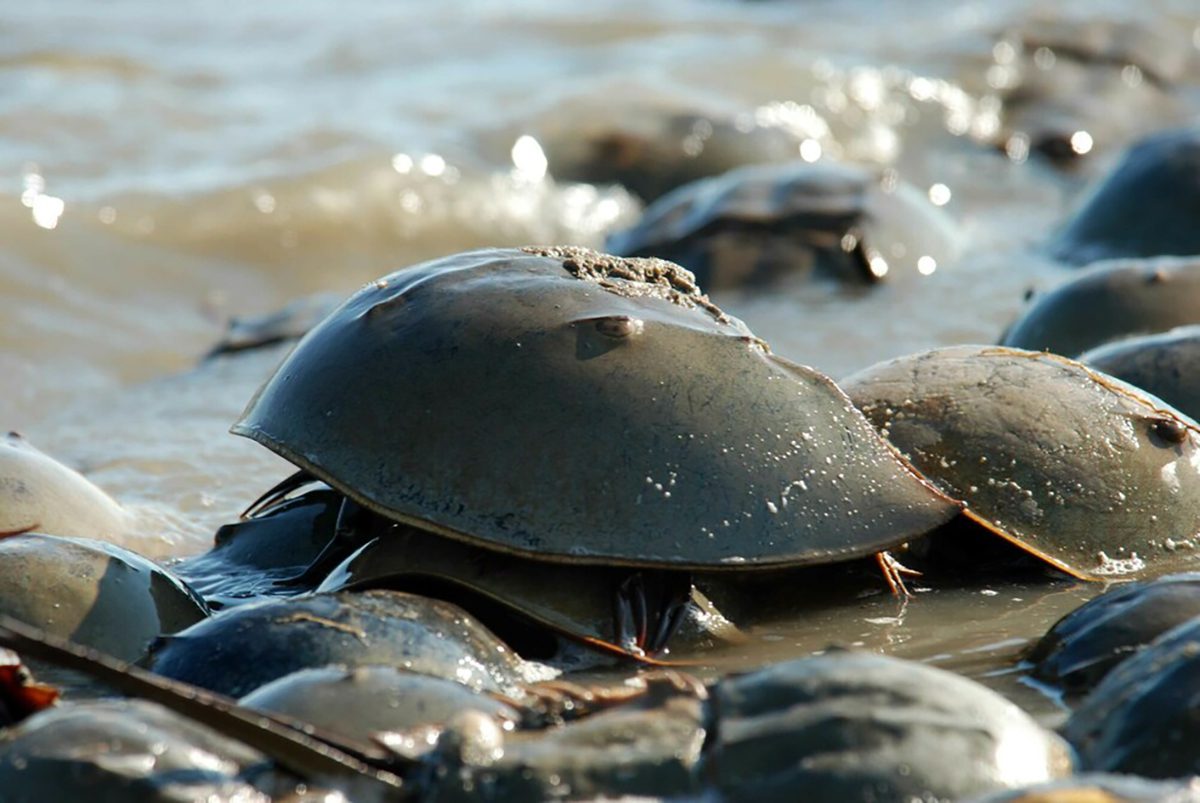
Nearly two dozen organizations have petitioned the federal government to list the American horseshoe crab as an endangered species.
Overharvesting and habitat loss has caused a sharp decline of horseshoe crab populations in recent decades, prompting the call for the National Oceanic and Atmospheric Administration to list the marine animal under the Endangered Species Act.
Supporter Spotlight
“We’re wiping out one of the world’s oldest and toughest creatures,” stated Will Harlan, a senior scientist with the Center for Biological Diversity. “These living fossils urgently need Endangered Species Act protection. Horseshoe crabs have saved countless human lives, and now we should return the favor.”
Horseshoe crabs are harvested for their blood, which is used to detect toxins in drugs and medical devices, the center said.
Nearly 1 million were harvested for their blood in 2022, according to the center.
“The continued reliance on horseshoe crab blood by pharmaceutical manufacturers has led to a rapid decrease in the population of this important species,” said Kathleen Conlee, vice president for animal research issues at the Humane Society of the United States. “Fortunately, there are non-animal alternatives that can replace the use of horseshoe crab blood and help protect these amazing animals from further overharvest.”
Synthetic alternatives are being used in Europe, the group said.
Supporter Spotlight
The center and 22 partner organizations petitioned NOAA to list the prehistoric creatures – a species that has been around for more than 450 million years – that are also harvested for bait by commercial whelk and eel fisheries.
Their largest populations, which are found in the Delaware Bay, have declined by two-thirds in the last 30 years, the groups said.
These brown, body-armored animals have also lost spawning grounds up and down the Atlantic and Gulf coasts where they lay their eggs. The petitioning groups attributed the habitat loss to development, shoreline hardening and sea-level rise.
Horseshoe crabs’ decline has impacted other species, including the rufa red knot, a shorebird that eats horseshoe crab eggs to pack on calories as it flies 19,000 miles from South America to the Arctic. The rufa red knot was listed as threatened in 2015.
“Horseshoe crab eggs are incredibly nutrient dense, sustaining the federally threatened red knot on their long migratory journey,” stated Steve Holmer, vice president of policy at American Bird Conservancy. “Greater protection of the horseshoe crab is needed to fully recover the red knot, as well as conserve other shorebird species, such as the ruddy turnstone and semipalmated sandpiper.”
Asia’s tri-spine horseshoe crab, a sister species to the American horseshoe crab, is nearly extinct.
“It is clear from the available science that the current fisheries management policies are failing to protect and sustain these ancient mariners,” said Tim Dillingham, executive director of the American Littoral Society. “We must do more to keep them and the red knots and other life that depend on them from disappearing from this Earth.”
Other organizations that joined in on the petition include: Humane Society of the United States, American Bird Conservancy, American Littoral Society, New Jersey Audubon, Delaware Audubon, Delaware Ornithological Society, Healthy Gulf, Humane Society Legislative Fund, League of Women Voters of New Jersey, Maryland Ornithological Society, Revive & Restore, One Hundred Miles, The Safina Center, Wild Cumberland, Forest Keeper, Coastal Expeditions Foundation, Mobile Baykeeper, Shark River Cleanup Coalition, Southeastern Massachusetts Pine Barrens Alliance, Save Coastal Wildlife, New Jersey League of Conservation Voters and the Delaware Riverkeeper Network.







